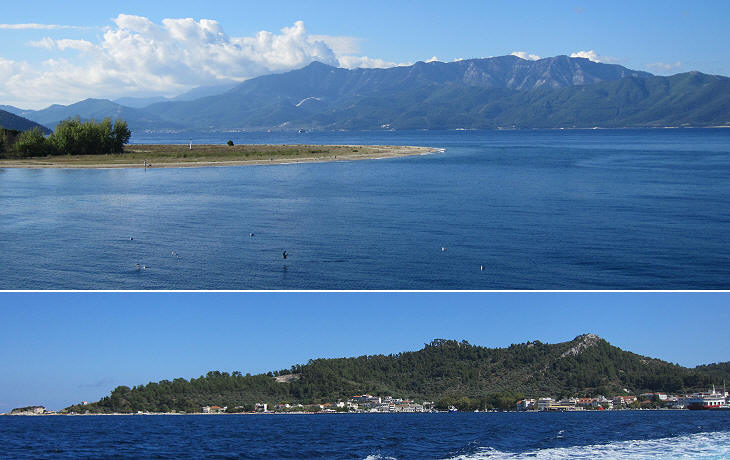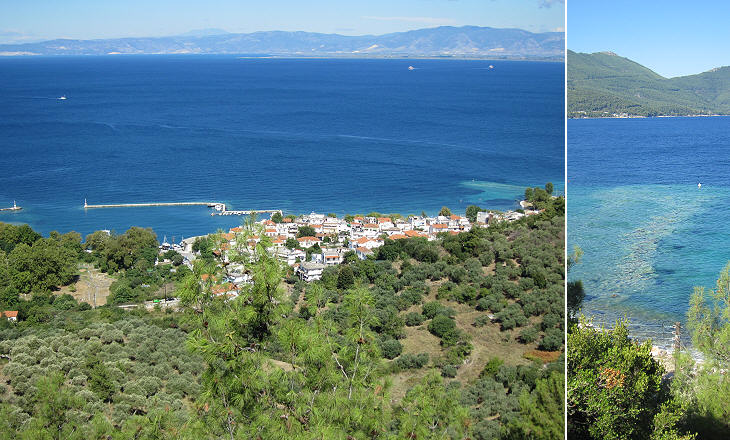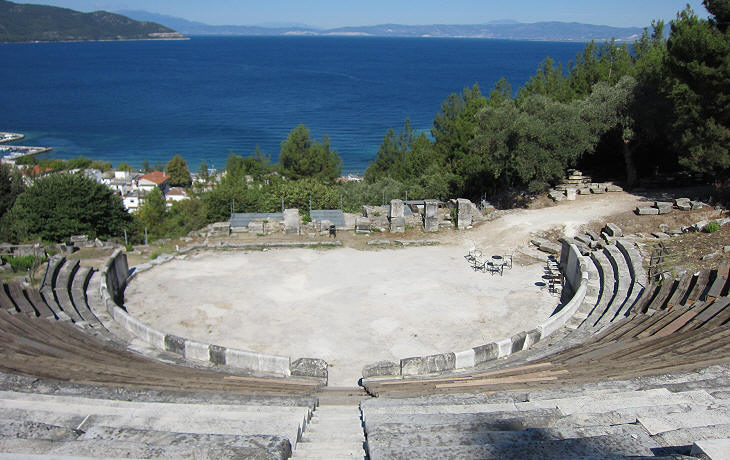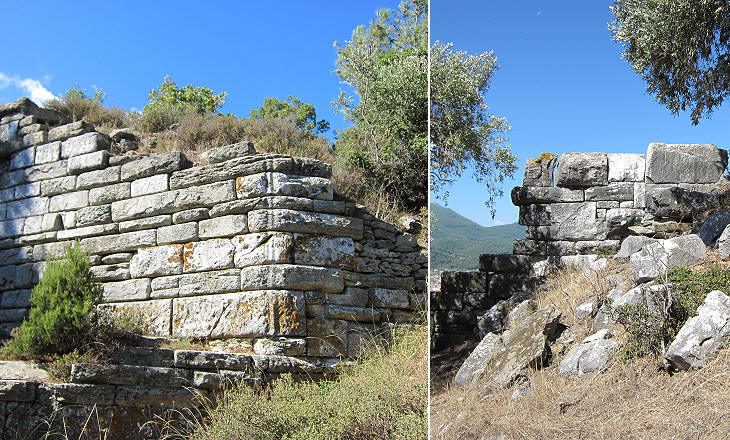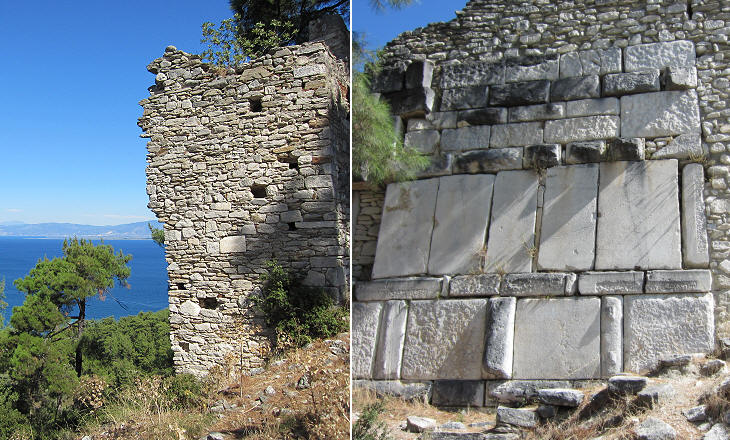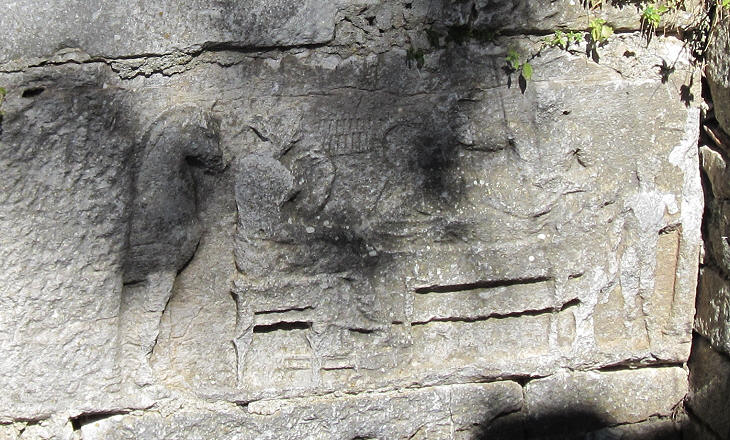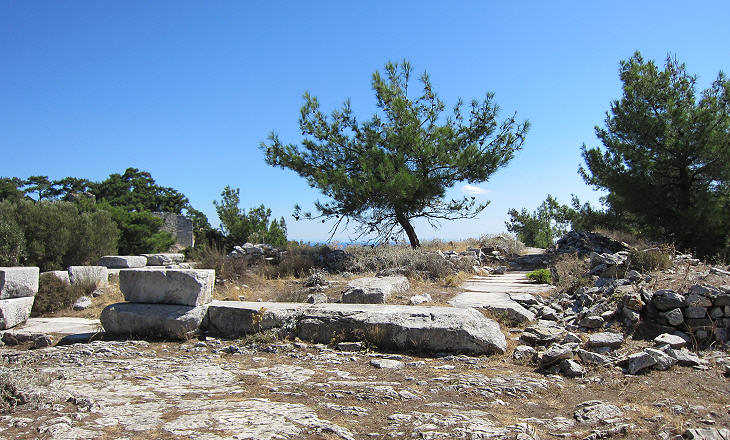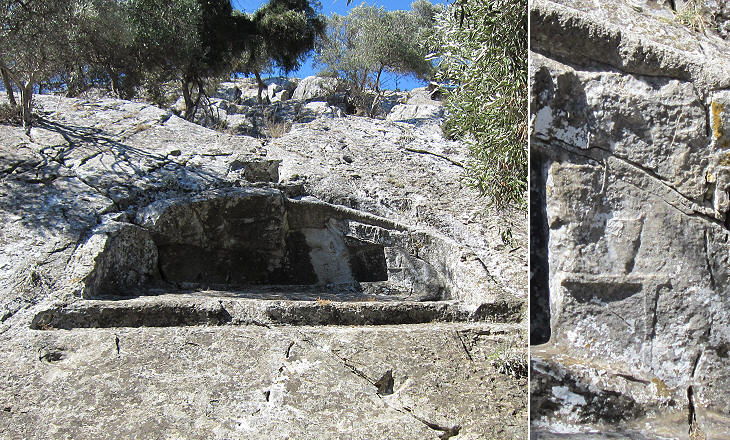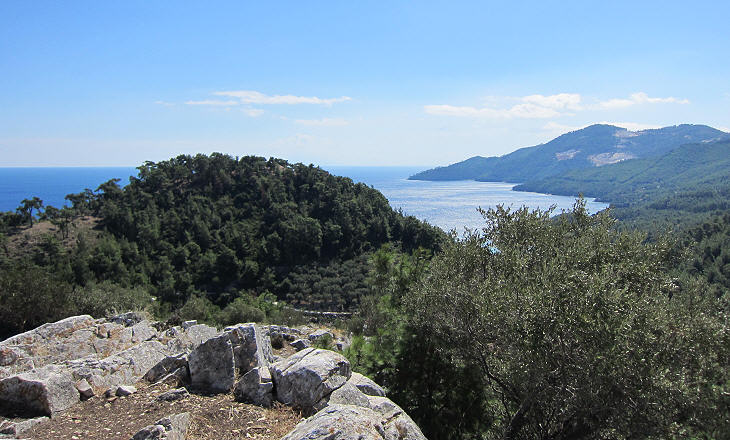  What's New! Detailed Sitemap All images © by Roberto Piperno, owner of the domain. Write to romapip@quipo.it. Text edited by Rosamie Moore. Page added in January 2011. |
 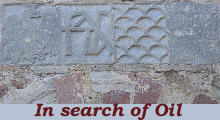 Thassos - The Acropolis Thassos - The Acropolis(coats of arms at a gate of the Metelino fortress) thalassocracy means "rule of the sea" and it indicates a power based on the control of sea lanes and in general the predominance of the inhabitants of the coastal regions over those living inland. Thassos was colonized by the Phoenicians, who established the major maritime empire of the ancient world.
Thassos, because of its location very near the Macedonian coast, was well suited to become a trading base for Phoenician merchants. A promontory with three peaks on the northern coast of the island provided some natural shelter for a harbour; in the VIIth century BC the Parians replaced the Phoenicians and Thassos became part of the Hellenized world.
In addition to its being a trading centre, Thassos was also a mining one as gold, copper, lead and silver mines were excavated by the Phoenicians and after them by the Parians; the latter introduced marble quarrying, for which their island of origin was famous. 77 West Wacker Drive (see external link), the corporate headquarters of United Airlines, is a 1992 Chicago skyscraper which was decorated with marble from Thassos, in order to emphasize a resemblance to a Greek temple.
In the IInd century BC the Romans conquered Macedonia and by alliances or direct rule they soon controlled the whole Aegean Sea; for many centuries Thassos benefitted from the security of sea lanes which was granted to the region by the Romans; its theatre was enlarged and adapted to holding fights with beasts (the wall surrounding the scene protected the spectators); the audience had to climb on the first hill of the acropolis, but they were rewarded by a commanding view over the narrows which separated the island from Neapolis (today's Kavala) on the mainland.
Strongly built walls of the pre-Roman period protected the acropolis; long sections have withstood the ravage of time including some very strong earthquakes; their construction technique calls to mind that employed for the acropolis of Nissiros.
The peak of the first hill housed a temple to Apollo, which was turned into a medieval fortress where the inhabitants sought refuge from pirate raids; Thassos was pillaged by Slavs, Saracens and Normans and the rule of the Byzantine emperors was very often just a nominal one. In the XIVth century, Zaccaria Tedisco, a Genoese adventurer ruled over the island, probably with the agreement of the Byzantine emperors.
In ca 1415 Emperor Manuel II assigned the islands of Thassos and Samothrace to the Gattilusio, a Genoese family who already controlled Metelino, a large island near the Asian coast of the Aegean Sea; they were feudal vassals of the emperor, but because of their Genoese origin they were somewhat shielded from being attacked by the Ottomans; this because Genoa was on good terms with the Ottoman sultans.
There is evidence that the Gattilusio strengthened the castle and other fortifications of the island; however after the 1453 conquest of Constantinople Sultan Mehmet II forced the Genoese to dismantle all the fortresses which protected their trading bases and his troops occupied Thassos and Samothrace.
The second hill of the acropolis housed a temple to Athena of which only the foundations can still be seen; although the archaeological evidence is very limited climbing all the three peaks of the acropolis is rewarded by the scenery which surrounds the ancient stones with the sea below and the blue sky above.
The god Pan loved nothing better than his afternoon sleep and he took revenge on those who disturbed him with a terrifying loud shout (that's why we call panic a state of terror); in summer he slept in a cave and the small shrine the inhabitants of Thassos dedicated to him has the shape of the entrance to a cave.
The image used as background for this page shows a relief in the lower town. Move to page two to see the lower town. Other pages of this section: Metelino Metimno (Molyvos) Aivali/Cunda Samothrace Clickable Map of the Ionian and Aegean Seas with links to other locations covered in this website (opens in a separate window) SEE THESE OTHER EXHIBITIONS (for a full list see my detailed index).  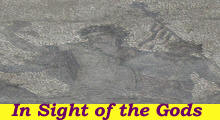 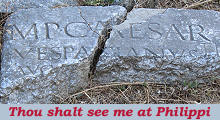 |
